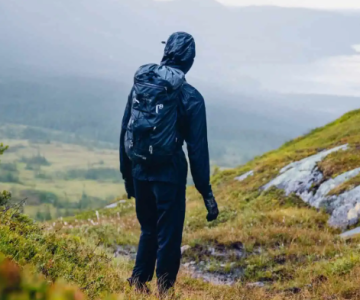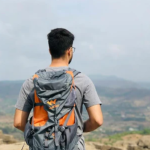Whether you’re aiming for a short, easy hike or tackling a more challenging peak, packing the right gear is essential. Being well-prepared for the conditions you’ll face can make all the difference in ensuring a safe and enjoyable adventure. This guide will help you understand what to bring on your next hike, factoring in things like weather, terrain, water availability, and remoteness.
Clothing and Footwear
Hiking Shoes
For day hikes with a lighter pack (ideally under 7 kg or 15 pounds), hiking shoes are typically a better choice than boots. They’re lighter, breathe better, and dry more quickly. Hiking shoes offer more support than trail runners, making them ideal for rough terrain. However, they don’t offer the waterproofing that boots do, which might only be necessary in very wet or cold conditions.
Quick-Drying Layers
For warmer weather, a pair of shorts and a shirt will usually suffice. For cooler conditions, you’ll want long pants and a base layer top to keep warm. Stick to quick-drying fabrics like polyester, nylon, or merino wool, which manage moisture well. Avoid cotton, as it retains water and will leave you feeling chilled if the temperature drops. Also, ensure your underwear is made from moisture-wicking material to stay dry and comfortable.
Weather-Appropriate Mid and Outer Layers
A lightweight, waterproof jacket (around 250 grams) can be a lifesaver in unpredictable weather. A fleece mid-layer is a great addition to keep warm, and it pairs well with your jacket. Always have at least one warm layer in your pack, especially if you plan on returning after sunset, when temperatures can drop quickly.
Sunglasses and Hat
Sunglasses protect your eyes from both UV rays and branches. At higher altitudes, UV exposure increases, so having sunglasses with full UVA/UVB protection is crucial. A wide-brimmed hat provides sun protection for your face and neck. A trucker cap may look cool but won’t offer the same coverage.
Backpack and Accessories
Pack
A daypack should generally fall between 18-28 liters in capacity. Consider how much space you need based on the weather conditions, as cold or wet weather requires extra layers, which can quickly fill a small pack. Make sure the pack fits comfortably on your body, with options for adjusting the torso and hip straps to ensure stability.
Reservoir or Bottles
You’ll need enough water to stay hydrated, especially if you’re hiking in warm weather. On average, a hiker needs 400-800 ml of water per hour, so be prepared for a 4-hour hike with up to 3 liters of water if there are no refill points. A reservoir is handy for quick sips, but bottles are easier to refill.
Rain Cover or Pack Liner
If your pack doesn’t come with a rain cover, consider purchasing a separate one. Alternatively, you can line your pack with a plastic bag to protect your gear from rain.
Essential Kit
Trekking Poles
Trekking poles can ease the strain on your legs, especially during steep ascents or descents. They also provide stability when crossing rivers or navigating tricky terrain. While not mandatory, they’re a great option for those seeking added support, especially on challenging trails.
Headlamp
Always carry a headlamp if you’ll be out past noon. It’s essential for navigating in the dark and staying safe after sunset. Make sure it has at least 250 lumens and is weatherproof with a rating of at least IPX4. Don’t forget spare batteries, and keep them with your first aid kit for convenience.
Navigational Aids
While a GPS watch or phone can help with navigation, you shouldn’t rely solely on technology. Bring a map and compass as backup, even if you’re using a GPS device. It’s essential to know how to read a map and use a compass, especially if you’re heading into unfamiliar areas.
Satellite Messenger
For those heading off the grid, a satellite messenger is a smart investment. These devices allow two-way communication and often include an SOS button to send your location in emergencies. They’re especially useful for solo hikers or those venturing into remote areas.
Water Filter or Purifier
If you plan to refill from natural water sources, bring a water filter or purifier. A compact, efficient filter like the Sawyer Squeeze is popular and lightweight. In areas with high traffic, or where water quality is a concern, you may want to take additional precautions like using UV purification tablets.
First Aid Kit
A basic first aid kit is a must for any hike. Customize it based on your needs, but be sure to include essentials like blister patches, antiseptic wipes, rehydration salts, and a small blade for minor injuries. Consider also carrying your water purification tablets and spare headlamp batteries in this kit.
Emergency Bivvy
In case you get lost or caught out after dark, a small emergency bivvy can provide vital warmth and shelter. While not a replacement for warm clothing, it’s a handy backup in cold conditions.
Provisions
Trail Snacks
Fuel your hike with easy-to-carry snacks like energy bars, dried fruit, nuts, and jerky. These will keep your energy up throughout the day. Be mindful to balance sugar-rich snacks with protein and fats to prevent blood sugar crashes.
Sunscreen
Even on cloudy days, UV rays can be harmful. Use a high-SPF sunscreen (SPF 50 or more) and choose one that protects against both UVA and UVB rays. For easy application, a stick is perfect for the face and neck, while a spray is convenient for larger areas like arms and legs.
Toilet Paper
On trails where there are no restrooms, you’ll need to pack out your waste. Bring toilet paper and use a double-bag strategy for safety. A small trowel is also useful for digging a cat hole in the wilderness.
Get Out and Explore
The best way to fine-tune your packing list is by getting out there and gaining real-world experience. Every hike provides valuable lessons that will help you refine your gear choices and your overall preparation. Happy hiking, and remember to always be prepared for whatever the trail may throw at you.





